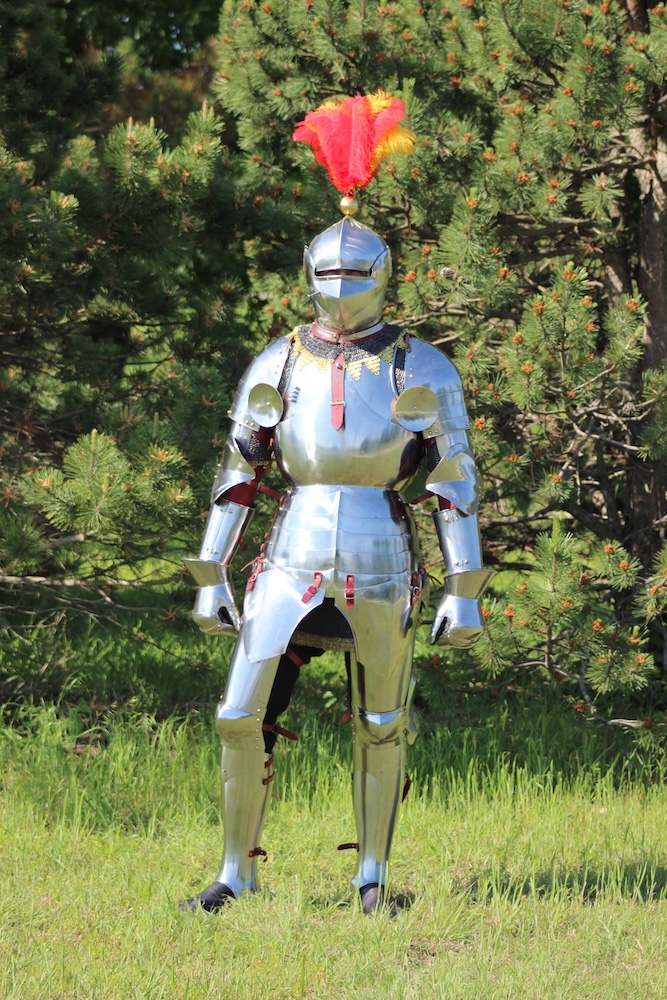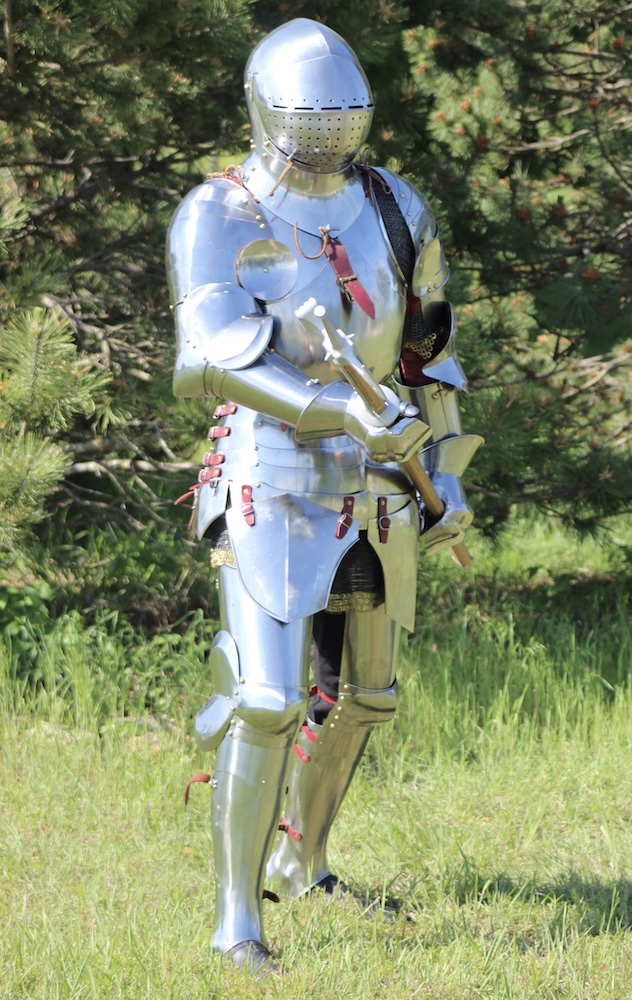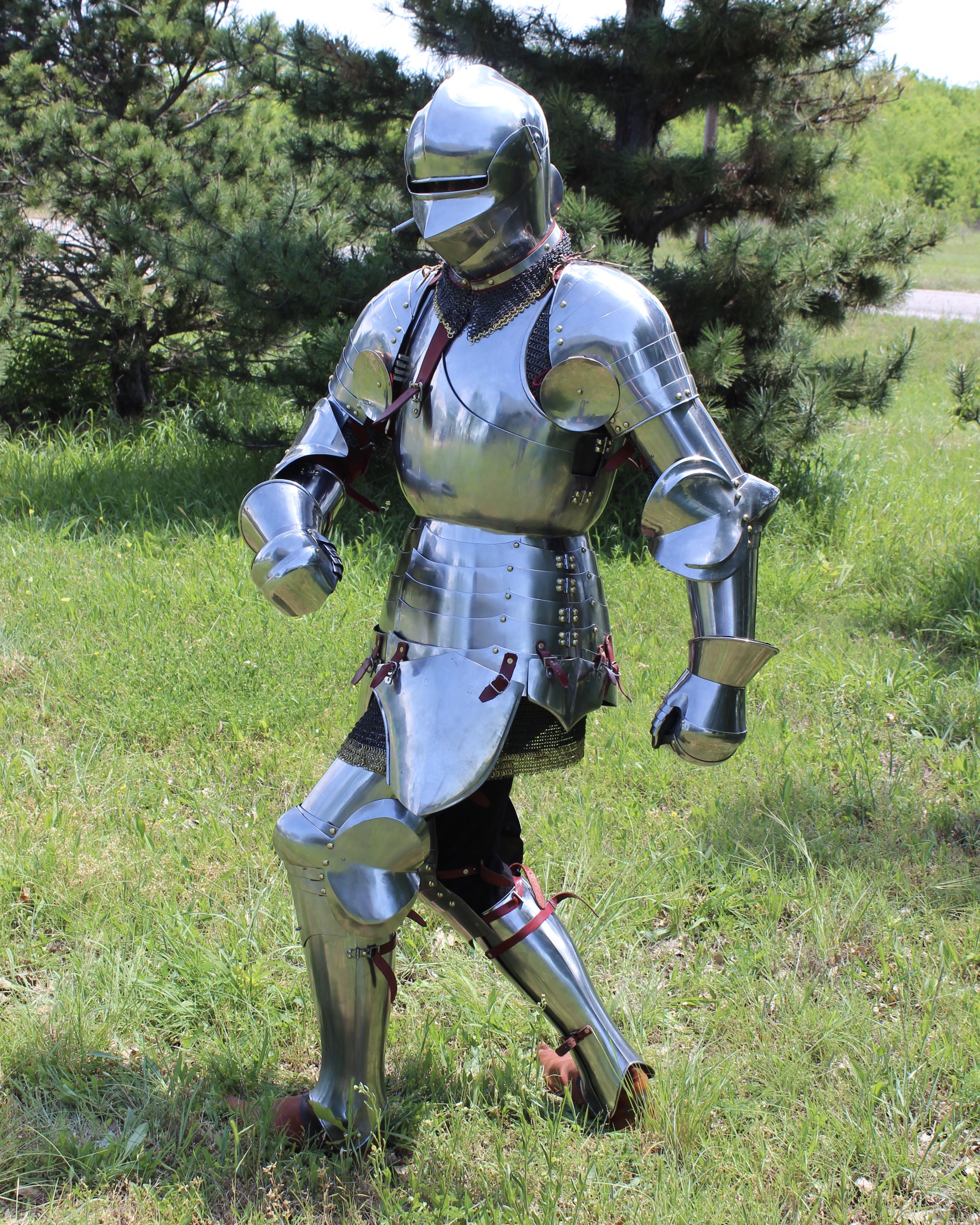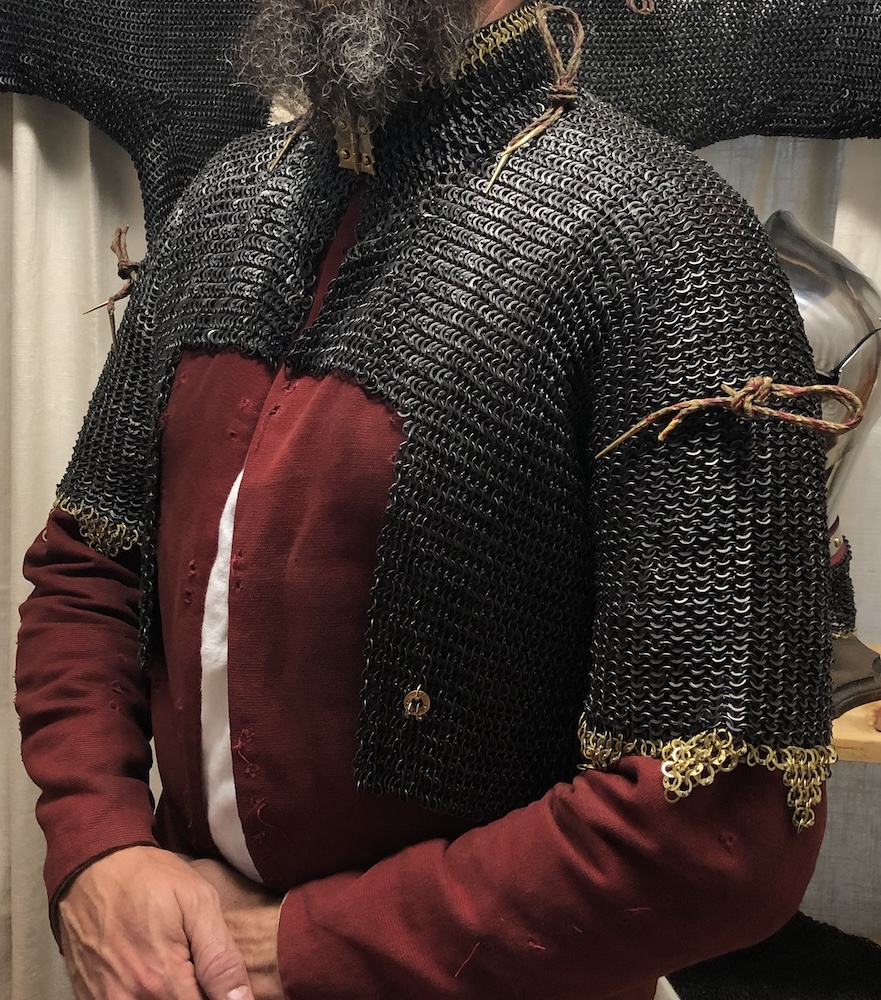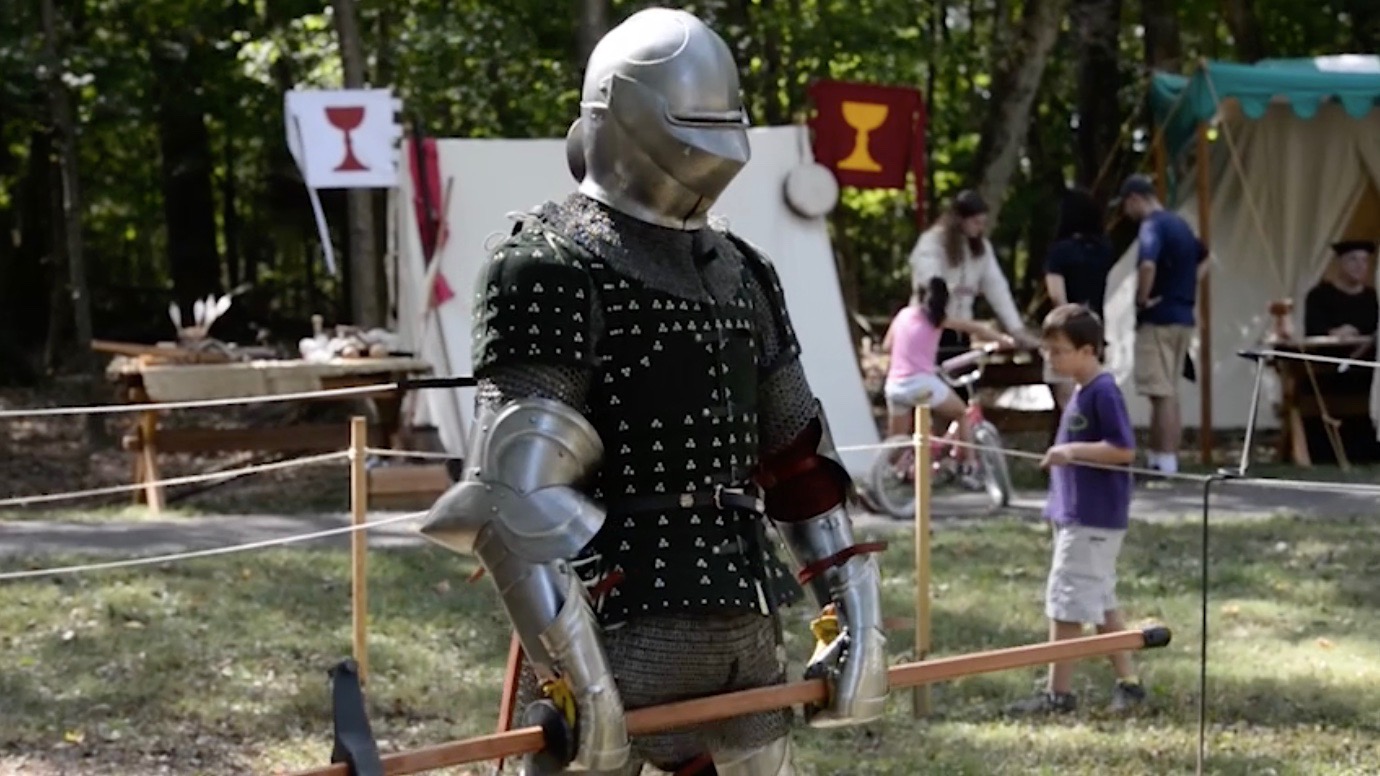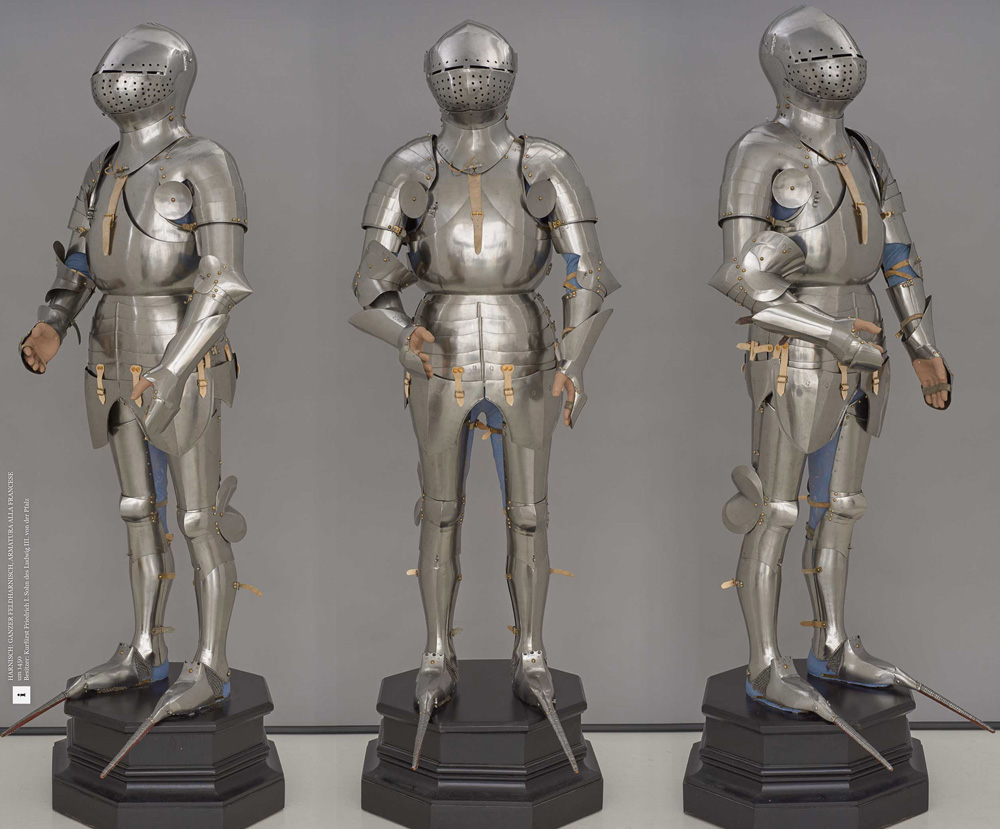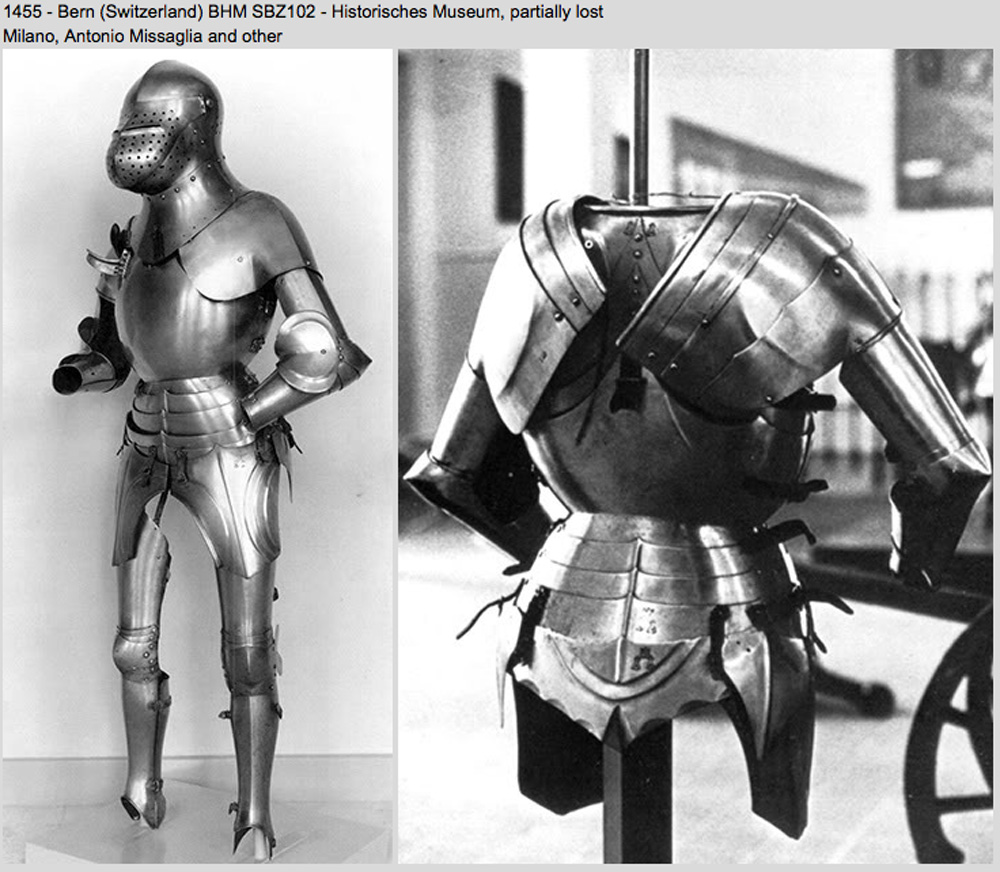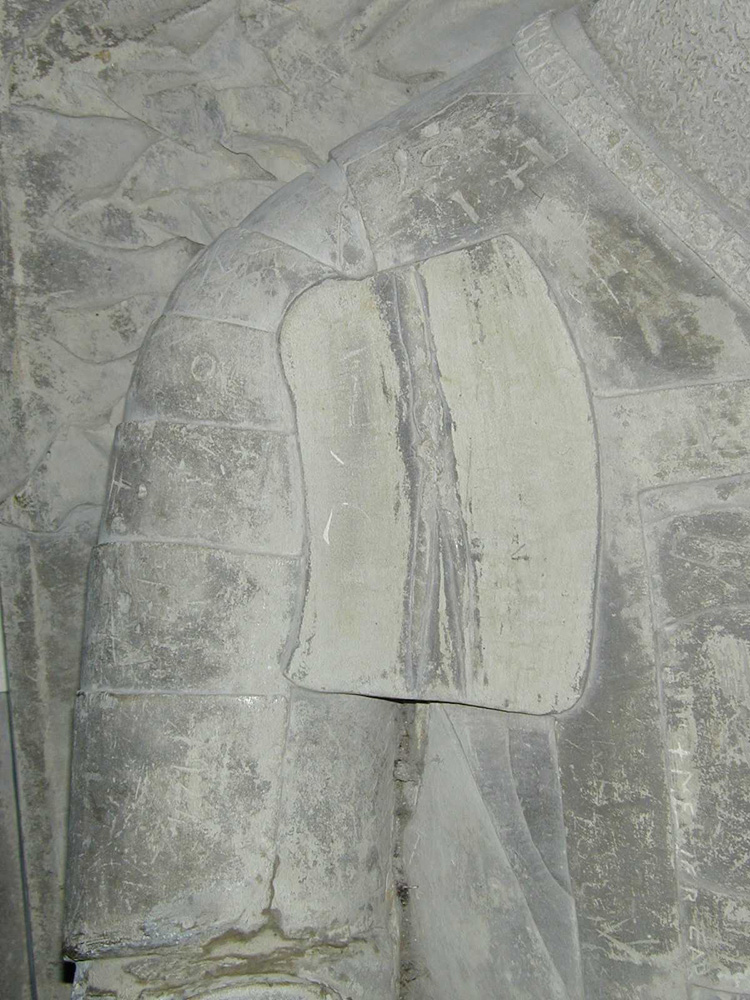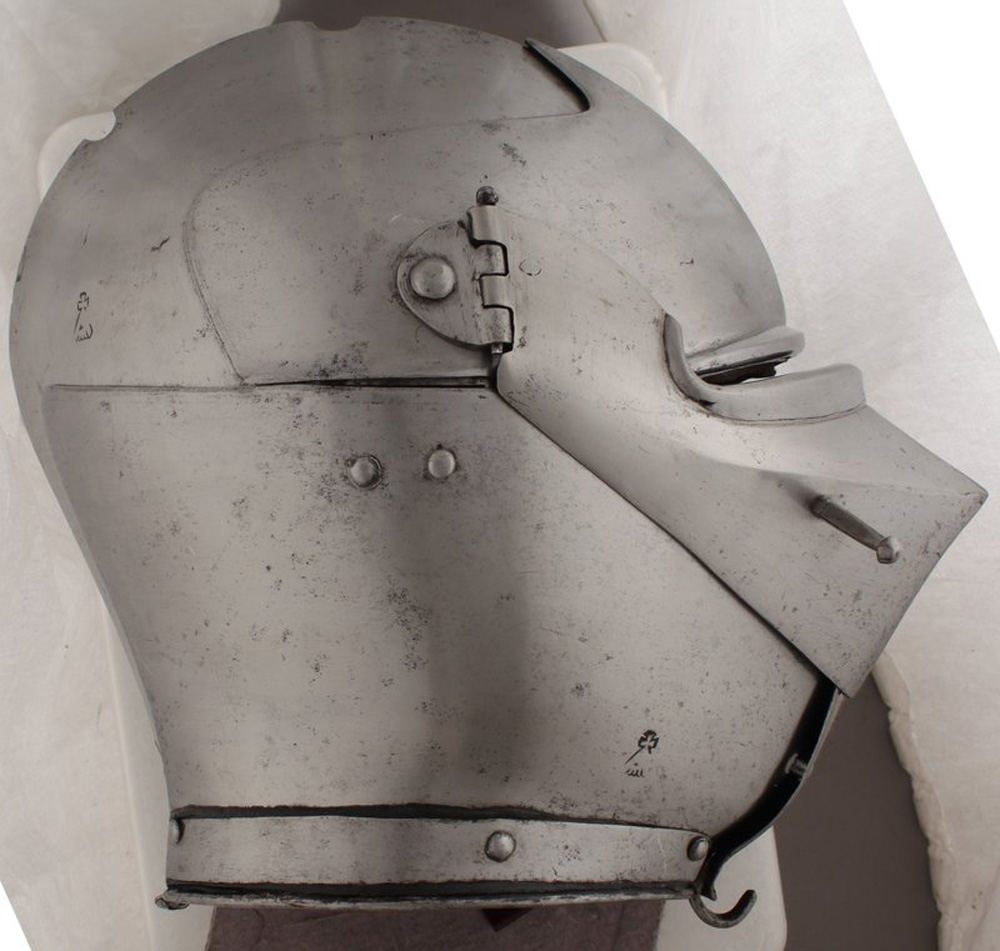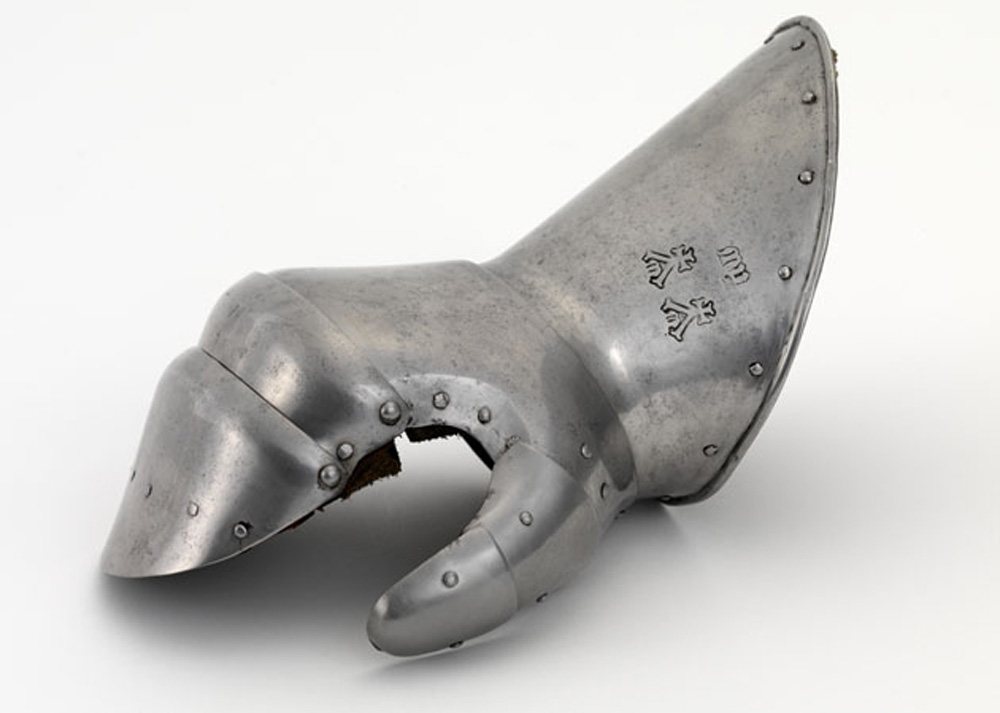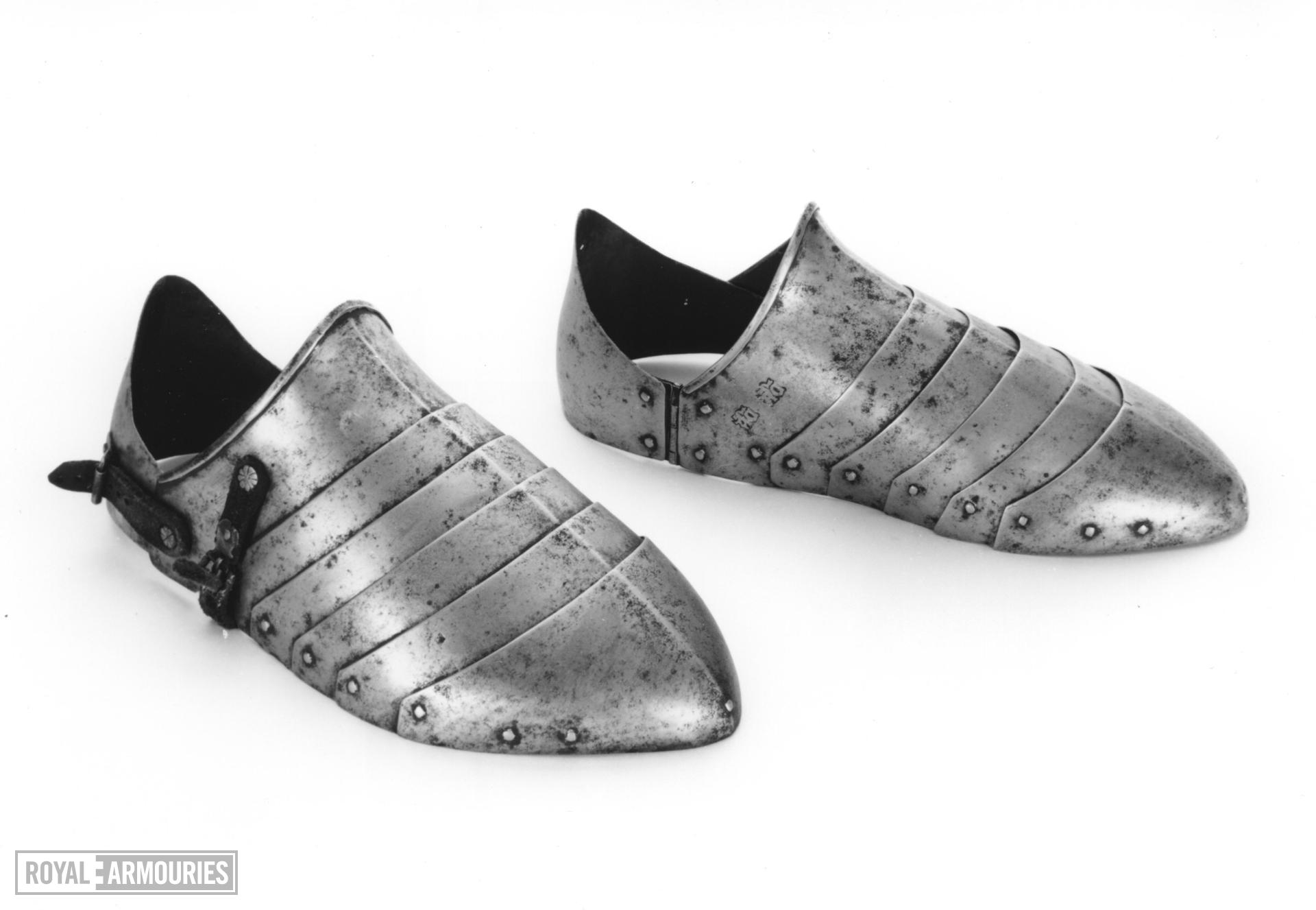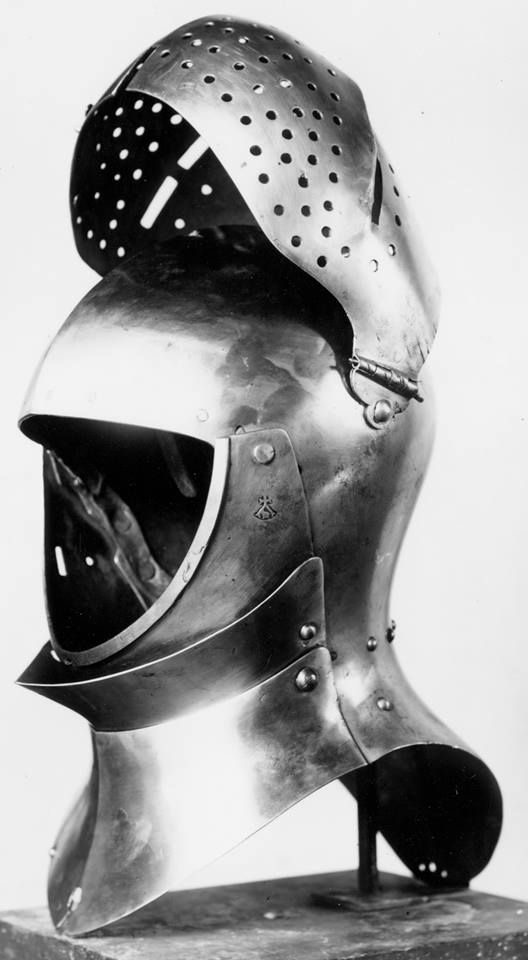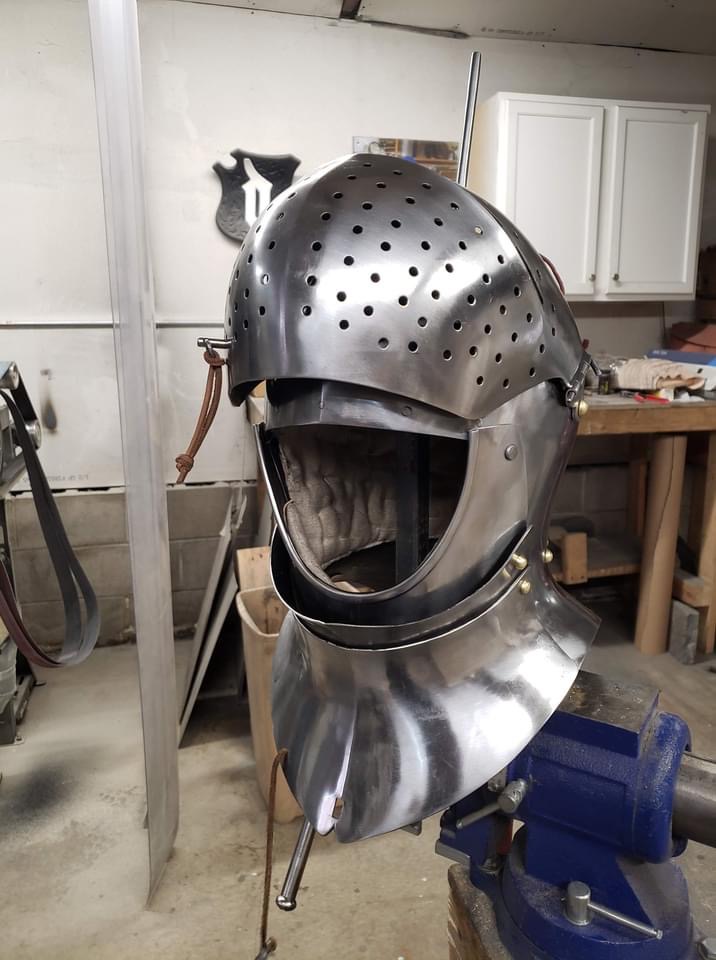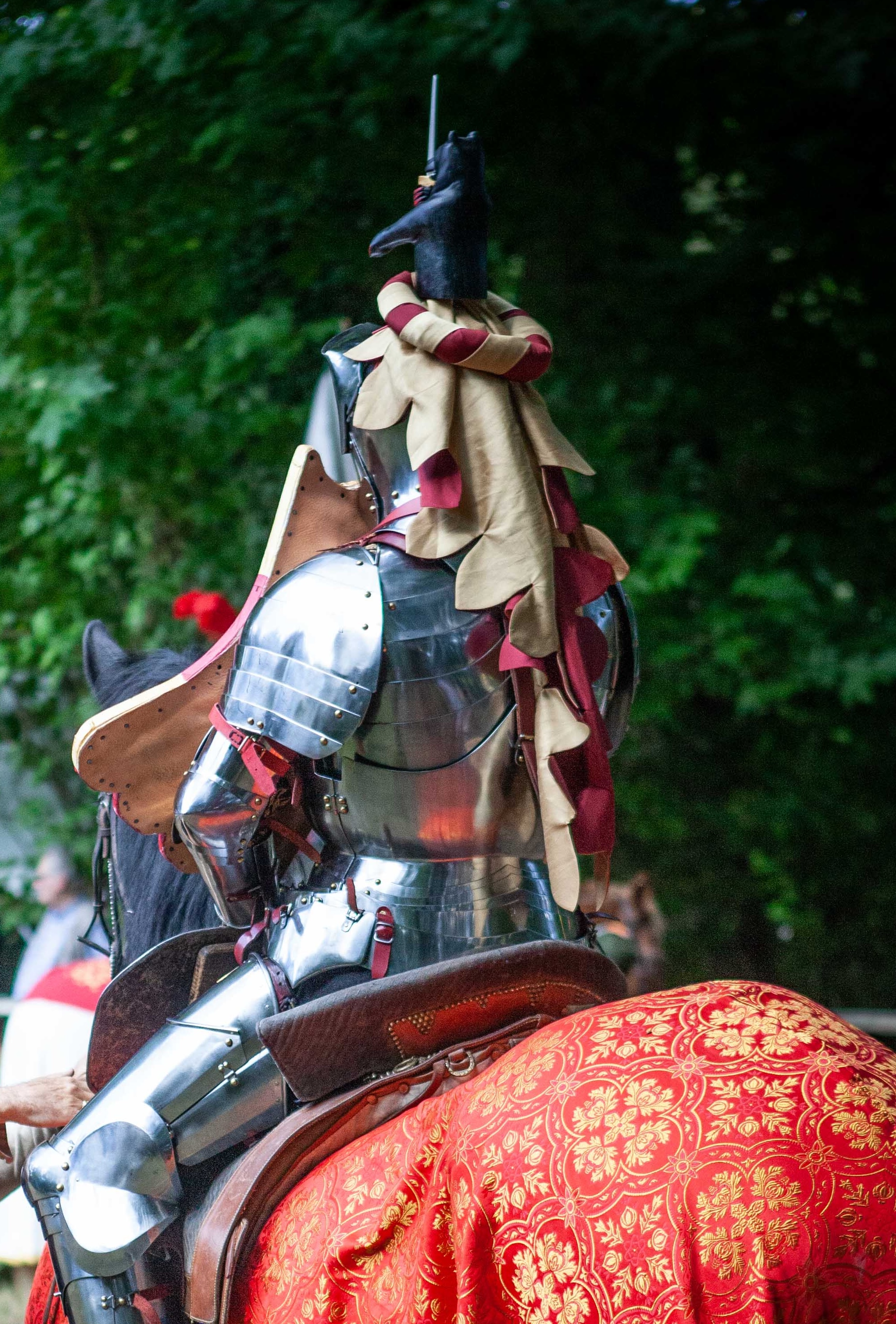A Word About Our Armour
Importance of Quality
A knight's armour must be strong enough to protect him from the powerful blow of lance, sword or bodkin while still being flexible enough to enable him to sit firmly in the saddle atop his charging warhorse. On foot, a knight's harness must allow him to fight vigorously with sword or pollaxe and, if necessary, re-mount his horse. Few armourers today have the requisite knowledge or skill to reproduce fifteenth-century armour that even approaches historical standards.
"Why?" you might ask. Despite museums around the world being filled with countless examples of medieval armour, very few complete suits have actually survived intact. Most of the internal leathers have rotted away over the centuries. Bits and pieces have fallen off and been lost. The vast majority of those seen in books and on display are "composite," meaning they have been assembled together by modern-day curators in an effort to replicate what armor should have looked like.
Unfortunately, an overwhelming number of poorly-crafted armours saturate the marketplace. They are often ill-fitted to the buyer, which only serves to perpetuate the myth that medieval armor was overly cumbersome and almost impossible to wear. Visit almost any Renaissance Fair and you will likely encounter an army of self-professed experts who still swear that knights had to be winched onto their horses and were unable to rise if pushed over in battle.
Historical Basis
Knyghtly Armes uses high-quality harness reproduced from historical examples using tempered spring steel with a high carbon content. Below is a small gallery of a recently completed Milanese export armour 'in the English stylé' 1450. It was based primarily on the WS A2 currently residing in the Kunsthistorisches Museum (now Welt Museum) in Vienna, Austria. Originally belonging to Friedrich I, Kurfürst von der Pfalz, it is possibly the best preserved and near-complete example of a Milanese export armour: symmetrical shoulders with besegews, longer cuirass skirt, smaller tassets, and a great bascinet. The Friedrich was made by the Missaglia workshops in Milan with a few modifications as required by a German client. It had asymmetrical arms and mail sabatons. It is impossible to know if the gauntlets were another point of variance, or not, as the ones now associated with it were not the originals.
The next step was to determine what an English variant of the same style would look like. Dr. Tobias Capwell, curator of arms and armour at the Wallace Collection in London, recommended symmetrical vambraces and gauntlets, rectangular besagews, an armet, and plate sabatons. A contemporary example of vambraces with symmetrical couters made in the same Milanese workshop can be seen on the BHM SBZ102 composite armour currently in the Historisches Museum in Bern, Switzerland. Although the Germans preferred circular besagews, those seen on similar armours in England are often more or less rectangular, with slightly concave sides resembling a miniature pavise. The besagews were based on examples found on the monumental effigy of Sir John St. Loe (1447) in Chew Magna, Somerset. The armet was styeld after LM 16807 in the Swiss National Museum in Zurich, also made in the same Missaglia family workshops as the Friedrich. Finally, the symmetrical gauntlets were modeled after E.1939.65.e.1, the extant right gauntlet of the 'Avant' armour in Glasgow. The harness was made by Jeff Hedgecock of Historic Enterprises. Later commissions replicated the original bascinet with an additional exchange visor for jousting and sabatons based on object III. 1348 (c1445-55) in the Royal Armouries, all by Josh Davis of Davis Reproductions. A hand-carved bear crest was created by Robert Wenta to complete the tournament harness.

